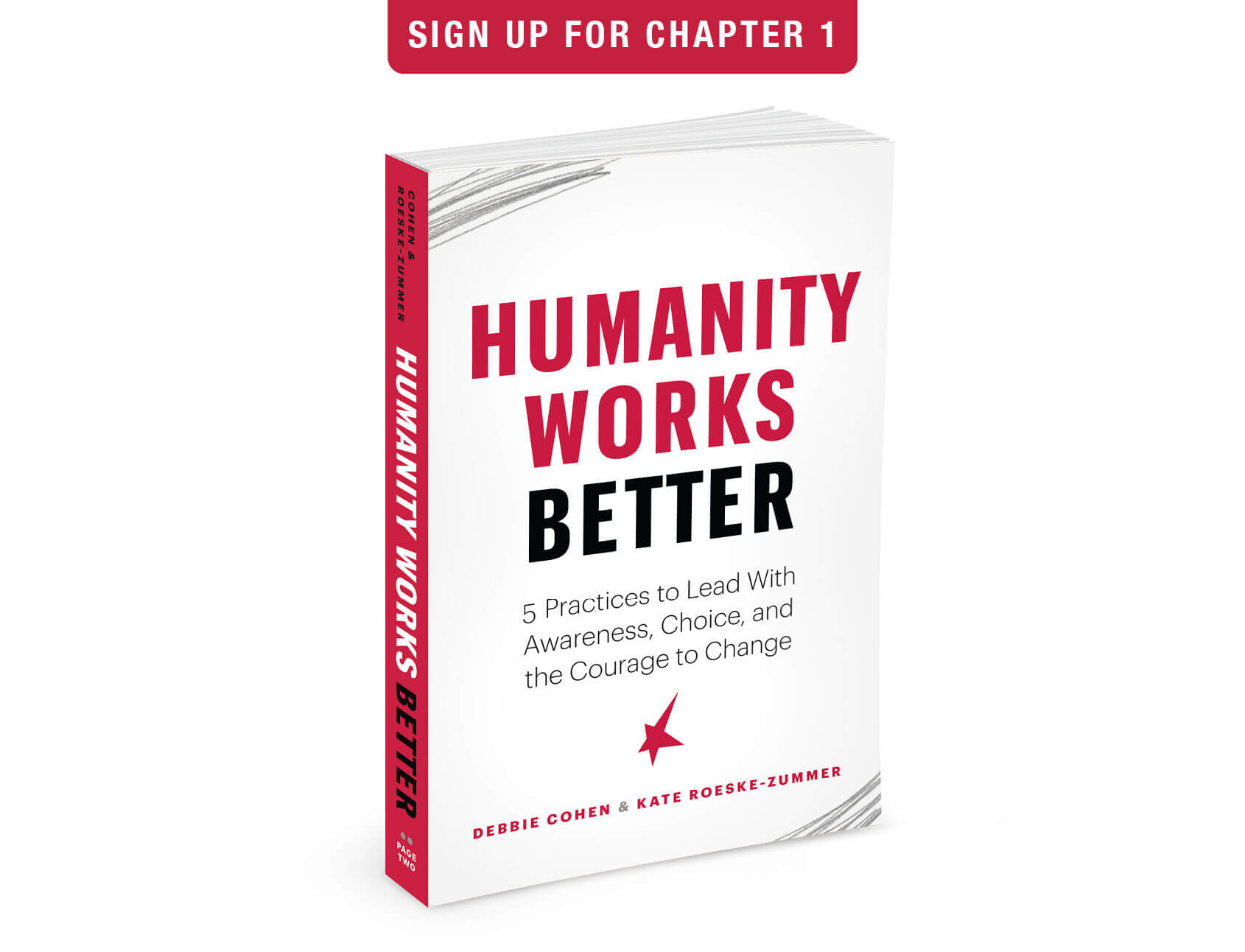
In the last four months our worlds have been turned upside down. By both a global pandemic and a global outcry for equality. While this series was written on working with difficult people in the workplace, we find that a broader application has emerged here. We have created a three-part mini-series devoted to the challenge of working with Difficult People. The first article focused on civility at work. Today we turn our attention to micro-inequities and how Small Actions Can Create Unintended Impacts.
In the mid-70’s, Mary Rowe first coined the phrase micro-inequities. Micro-inequities are subtle forms of discrimination: a comment, a gesture, a use of specific words, even a tone of voice. They occur when a person is singled out, overlooked, ignored, or discounted based on an unchangeable characteristic, such as race or gender. In her words, micro-inequities are “apparently small events which are often ephemeral and hard to prove events which are covert, often unintentional, frequently unrecognized by the perpetrator which occur wherever people are perceived to be different.” They happen almost without you realizing, until you do. It might happen once, or maybe even twice and you’re able to brush it off, but then you notice a pattern…it keeps happening. You also notice you don’t like it. At all. You start to feel singled out, overlooked, ignored, or discounted.
A micro-inequity is a behavior. Mary Rowe offers the following examples of micro-inequities[1]:
Consistently mispronouncing a person’s name
- Interrupting a person mid-sentence
- Making eye-contact only with males while talking to a group containing both males and females
- Taking more questions from men than women
- Confusing a person of a certain ethnicity with another person of the same ethnicity
- Rolling of their eyes
- Sighing loudly
- Raising their voice, even though the other person has no difficulties hearing
- Making jokes aimed at certain minority groups
- Issuing invitations that are uncomfortable for certain groups (“Please feel free to bring your wife,” “There is a link below to childcare options for female speakers who plan to bring their children,” “There will be a belly-dancer at the party,“ “Our annual Christmas party will be held on December 18,” “Please bring pork chops to the potluck dinner”)
We have added a few of our own to update for current times:
- Checking emails or texting during a face-to-face conversation
- Consistently ignoring a person’s emails for no good reason
- Only reading half of a person’s email and then asking the person about the content later
- Using your laptop or phone instead of being with people in the room
- Selective listening: not listening to someone or listening only to a chosen few
- Repeating what someone else has said without giving credit to them
- Two people dominating the conversation
- Body posture that literally blocks certain people from participating
- Excluding people on email strings or in meetings
The lists are far from exhaustive, but you get the idea. In life, micro-inequities make you feel unwelcome, unsupported, devalued, marginalized and invisible. In the workplace, they are small and subtle forms of discrimination that adversely impact productivity and result in the attrition of good humans.
If you notice micro-inequities happening to you, there is a pretty good chance they are happening to others. If the “perpetrator” is unaware their behavior is creating a negative impact, they need to be made aware. Once they are made aware, then they have a responsibility to change their behavior so that they stop hurting the people around them. This is the good news and the bad news, and it bears repeating over and over: you are the only person who can do something about how you are treated. We have a saying we use with each other and with our clients: you are training the people around you all the time how they can treat you.
So, how do you stand up to this kind of behavior? There are four components:
- Make the person aware of what is happening
- Describe the impact it creates on you
- Describe the impact it creates on the work you do together
- Identify the effect it will have on your relationship if it does not stop.
There was a time Deb was working with two male members of an executive team: Person A and Person B, to solve an issue. Numerous emails went back and forth as they wrestled with the issue at hand. Deb began to notice that whenever Person B replied, she was taken off the email thread. Deb noticed it once and thought it an odd but honest mistake. Person A would add her back in, but it happened again. And then again. And then Deb was pissed. In the span of minutes, she concocted all kinds of “bro” based conspiracy theories and thoughts of maliciousness. Then she paused and took a deep breath. Deb reached out to a neutral party to self-check her experience; they confirmed what was happening was a micro-inequity. If Deb didn’t want it to continue, she had to be willing to address it. Assuming positive intent and that Person B was unconscious of his actions, Deb wrote him an email. She described what had been happening without blame or judgement and noted the affect the slight was having on her. Deb reinforced the value of their working relationship and the need for them to work well together now, and in the future. And she identified how, if left unchecked, this behavior would adversely impact the nature of their working relationship. Immediately the phone rang. Person B was on the other end. He was so appreciative that Deb had made him aware of what was happening. He was totally unaware he had been deleting her from the email thread, but grateful she had let him know what was happening. We’re happy to report that it never happened again and they remain close to this day.
We realize the relationship you have with the person dishing out the belittling behavior might cause you to hesitate. When diminishing behavior comes from a boss or someone more senior than you, it might feel risky to address it. And, there may be other factors and scenarios where saying something is scary. We get it… this is hard, messy stuff. And here is the deal – you deserve better. You are worthy of being treated like the good human you are. Remember, you are training the people around you all the time how they can treat you. Only you can decide to take a stand for yourself.
Photo by Vladislav Babienko on Unsplash
There are things you can do to begin to shift the relationship dynamics. What you choose to do and how you act will make all the difference. When sending a difficult message, it is not just having the courage to say it, it is delivering the message in a way the other person can receive it. We have come up with a few non-linear tactics to consider:
Initiate a conversation and here is a practical formula to try: “I feel ____________ when _________ happens because _____________. The impact it has on me is ___________ and on our work is ____________. I need _______________ moving forward. Otherwise I will need to do _____________.
Additional non-linear tactics can be tried from our acronym called A CHOICE.
“A” stands for assume positive intent. The “perpetrator” may be unconscious to the fact they’re doing something that might be demeaning or disrespectful. If you can begin with the mindset that they are not intentionally trying to harm you – that they are unaware of their impact – it can help you approach the issue from a less agitated state. Your goal is to make them aware of their impact.
“C” stands for calm. Get yourself unhooked from the incident. Do what you need to get centered and grounded. This might mean taking a walk around the block, calling a friend, or sleeping on it. Do what you can to calm your immediate reactions. And when you are ready, let the best of your emotions fuel your courage to take action and create the outcome you want.
“H” stands for humor. Humor helps lighten a tough message without losing the plot line. It is both what you say and the tone in which you say it. Practice delivering your message out loud. Play with different tones, record them and play them back. Which tone would you respond most positively to? Saying “I notice my input is passed over in large meetings. What is that about?” with a tone of anger, or with lightness makes a difference on how it will be received.
“O” stands for own your message/voice. What you have to say is important and worthy. If your inner critic is saying otherwise, sit them down and give them a good talking to. Realize the job of your inner critic is to keep you small, which is the same effect your “perpetrator” is having. Let them both know you are worthy of something better. Only you can do this.
“I” stands for intrude. You are breaking a cycle of behavior. Do not be quieted. Intrude into their thoughts by adding in yours. If you are in a meeting and someone cuts you off, interrupt them with “I haven’t finished my thought, hold on,” and take the room back. This will happen a lot on video calls, so give some grace to what is a micro-inequity and what is crummy technology. One way around this is to develop a protocol, like 3-minutes per person to talk, so everyone gets uninterrupted time.
“C” stands for curiosity. You’ve heard us say it before, but it’s worth repeating: this skill is the antidote to judgement. If people feel blamed or judged, they tend to withdraw and pull away. For your message to have impact, the “perpetrator” needs to stay in the conversation with you. Curiosity can help with that. Pull them aside vs. calling them out in a group setting. Lead in as neutral of a voice as you can, “I’ve noticed during our group meetings with John, when I speak up, there is no verbal response and instead he is called on for input. This makes me feel silenced and like my ideas are not valued. I’m curious, what is that all about?”
“E” stands for engage. Readiness, place and timing are super important when confronting someone. You need to be ready, rested, prepared… and so do they. You get to set the stage. Start with being honest about what you want to talk about, including details such as why and when, e.g. “We need to talk about how I was treated in the meeting last week. I am not OK with being called out in such a diminishing, belittling way. We need to figure out what is going on and how to move forward. Is now a good time for this conversation, or would tomorrow morning be better?” Make a clear request.
This is your life; these are your relationships. Help people around you realize how their small actions create unintended impacts. You might be the first one brave enough to say something. Dare to explore these three things:
- What is the real challenge for you?
- How do you want to be treated?
- What would you do if you were not afraid?
Begin to train the people around you how to treat you! You do, in fact, have a choice.
Acknowledgements: Our gratitude to Anika Briner and Michelle Zajac for their contributions to this article.
[1] PSYCHOLOGY TODAY – POSTED APRIL 20, 2013

About the Authors, HumanityWorks Team:
Kate Roeske-Zummer, Founder and Chief Inspiration Officer
Bringing more humanity to the workplace.
Debbie Cohen, Chief Instigation Officer
Causing transformation of people and systems so both can reach their fullest potential.


